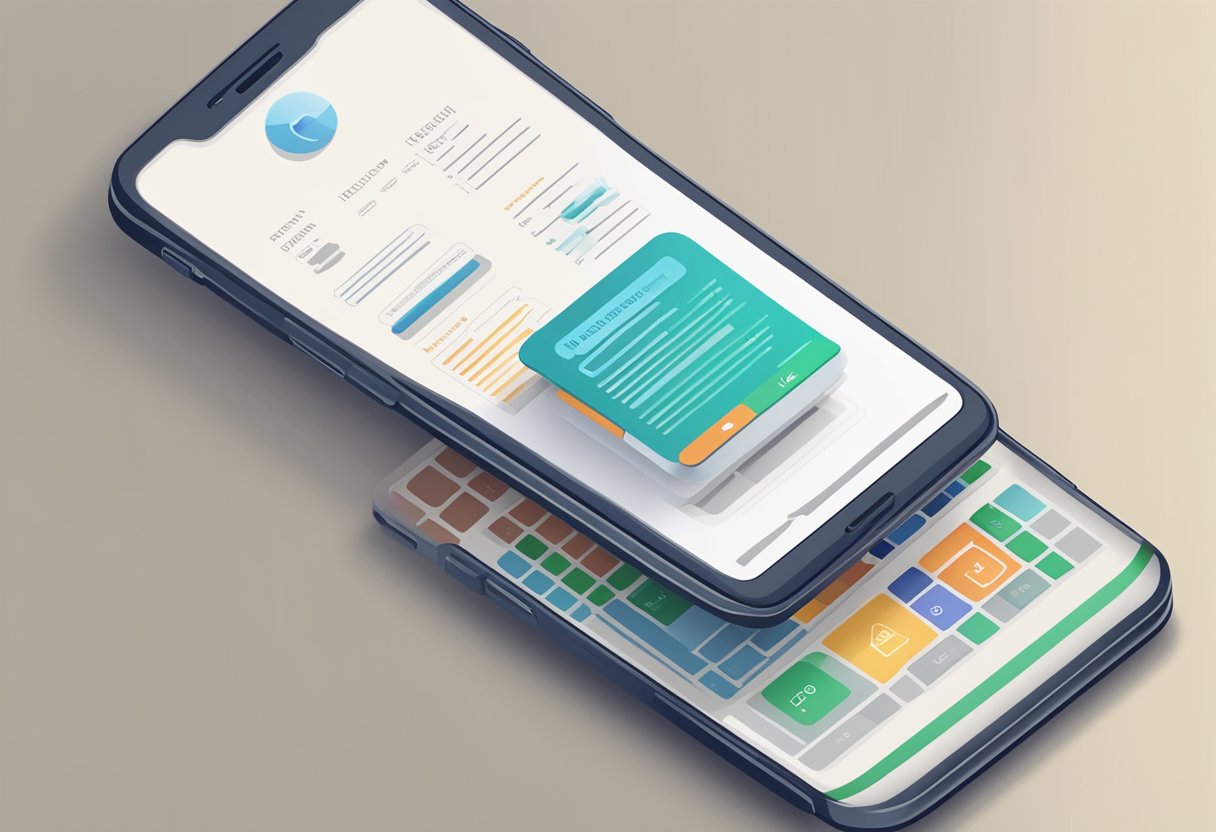Responsive web design has become an essential aspect of web development. It is an approach that enables a website to adapt to different screen sizes and devices, providing a seamless user experience across all platforms.
With the increasing use of mobile devices, responsive web design has become more critical than ever before. In this article, we will discuss the key benefits of responsive web design for mobile users.
One of the primary advantages of responsive web design is that it enhances user experience on mobile devices.
With responsive design, users can view and interact with a website without experiencing any issues related to the device’s screen size.
A responsive website can adjust its layout and content to fit any screen size, making it easier for users to navigate and interact with the site. This leads to higher engagement and conversion rates, which can significantly benefit businesses.
Another benefit of responsive web design is performance and optimization.
A responsive website can load faster on mobile devices, reducing bounce rates and improving user experience.
Additionally, responsive design can help businesses save time and resources by eliminating the need to create separate websites for different devices. This can lead to cost savings and improved efficiency.
Key Takeaways
- Responsive web design is essential for providing a seamless user experience on mobile devices.
- Responsive design can improve website performance and optimization, leading to higher engagement and conversion rates.
- Implementing responsive design can save time and resources by eliminating the need for separate websites for different devices.
Fundamentals of Responsive Web Design
Defining Responsive Web Design
Responsive web design (RWD) is an approach to web design that aims to provide an optimal viewing experience across a wide range of devices, including desktops, laptops, tablets, and smartphones.
The goal is to ensure that users can easily access and navigate a website, regardless of the device they are using.
The Role of CSS Media Queries
CSS media queries play a critical role in responsive web design.
They allow developers to apply different styles to a website based on the characteristics of the device being used.
For example, a developer can use media queries to adjust the layout of a website to fit the screen size of a mobile device.
Fluid Grids and Flexible Images
Fluid grids and flexible images are two key components of responsive web design.
A fluid grid is a layout that adjusts to the size of the device being used, while flexible images can scale up or down to fit the available space.
Together, these elements ensure that a website looks great on any device, regardless of its screen size.
Enhancing User Experience on Mobile Devices
Responsive web design is a strategy that allows websites to adapt to various screen sizes and resolutions, including those of mobile devices.
This approach has several benefits for mobile users, including enhanced user experience, improved navigation, and readability.
Adapting to Various Screen Sizes
One of the primary advantages of responsive web design is that it allows websites to adapt to different screen sizes.
This means that users can access the same content and functionality on their mobile devices as they can on their desktop computers, without having to zoom in or scroll horizontally.
By designing websites with mobile users in mind, businesses can ensure that their content is accessible to a wider audience.
This can lead to increased engagement and conversions, as users are more likely to stay on the site and complete desired actions.
Improving Navigation and Menus
Responsive web design also allows for improved navigation and menus on mobile devices.
By using touch-friendly buttons and intuitive menus, businesses can make it easier for users to find what they are looking for and complete desired actions.
This can be particularly important for e-commerce websites, where users may need to navigate through multiple pages and product categories to find what they are looking for.
By streamlining the navigation process, businesses can improve the user experience and increase conversions.
Responsive Typography and Readability
Another benefit of responsive web design for mobile users is improved typography and readability.
By using font sizes that are optimized for smaller screens, businesses can ensure that their content is easy to read and understand on mobile devices.
This is particularly important for websites that rely on text-based content, such as blogs and news sites.
By making their content more readable and accessible on mobile devices, businesses can improve the user experience and increase engagement.
Performance and Optimization

Faster Loading Times and Performance
One of the key benefits of responsive web design for mobile users is the improved performance and faster loading times.
With a responsive website, the content is optimized for the device it is being viewed on, resulting in faster load times and better performance.
This is particularly important for mobile users, who may have slower internet speeds and limited data plans.
Responsive web design also ensures that the website is optimized for different screen sizes and resolutions.
This means that the website will load quickly and smoothly on any device, regardless of its screen size or resolution.
This is important because users expect websites to load quickly and smoothly, and may abandon a website if it takes too long to load.
Content Prioritization and Delivery
Another benefit of responsive web design for mobile users is the ability to prioritize and deliver content more effectively.
With responsive design, content can be prioritized based on the device it is being viewed on.
For example, on a mobile device, the most important content can be displayed first, followed by less important content.
This ensures that mobile users can quickly and easily find the information they are looking for.
Responsive design also allows for more efficient delivery of content.
For example, images and videos can be optimized for different devices, ensuring that they load quickly and don’t use too much data.
This is important because mobile users may have limited data plans, and large images and videos can quickly eat up their data allowance.
SEO Advantages and Analytics

Impact on Search Engine Optimization
One of the most significant benefits of responsive web design is its impact on search engine optimization (SEO).
Google has emphasized the importance of mobile-friendly websites in its search algorithm.
With a responsive design, website owners can ensure that their site is optimized for all devices, including desktops, tablets, and smartphones.
This means that their website will rank higher in search engine results pages (SERPs) for relevant keywords.
Moreover, responsive web design eliminates the need for multiple versions of the same website.
This helps prevent URL duplication across different versions of the site, which can confuse search engines and negatively impact SEO.
By having a single, mobile-responsive website, website owners can ensure that their site is optimized for all devices, without having to worry about duplicate content.
Mobile Traffic and Analytics Reporting
Another advantage of responsive web design is the ability to track mobile traffic and analytics reporting.
With a responsive design, website owners can use tools like Google Analytics to track how their content is performing on different devices.
This allows them to optimize their content for mobile users and improve the user experience.
Responsive web design also makes it easier to track and analyze data from different devices.
Google Analytics and similar tools now cater to responsive websites by condensing tracking and analytics into a single report.
This makes it easier for website owners to see how their content is performing on different devices and make informed decisions about their website’s design and content.
Business Benefits and Best Practices

Conversion Rates and Business Revenue
Responsive web design has been proven to have a positive impact on conversion rates and business revenue.
This is because mobile users are more likely to engage with a website that is optimized for their device.
According to a report by Google, 61% of users are unlikely to return to a mobile site they had trouble accessing, and 40% will visit a competitor’s site instead. This highlights the importance of providing a seamless user experience for mobile users.
By implementing a responsive web design, businesses can ensure that their website is accessible and user-friendly across all devices, which leads to increased engagement and higher conversion rates.
This, in turn, can lead to increased business revenue.
Maintenance and Cost-Effectiveness
Another key benefit of responsive web design is that it can lead to lower maintenance costs and greater cost-effectiveness.
This is because businesses only need to maintain one website, rather than multiple versions for different devices. This can save time and resources, which can be redirected towards other areas of the business.
In addition, a responsive website can also help to reduce bounce rates, as users are less likely to leave a site that is difficult to navigate or access.
This can lead to greater customer satisfaction and loyalty, which can also contribute to increased business revenue.
To ensure the best results from responsive web design, businesses should follow best practices such as designing for touchscreens, optimizing images and videos for mobile devices, and using clear and concise content.
By doing so, businesses can create a website that is not only accessible and user-friendly, but also cost-effective and easy to maintain.



